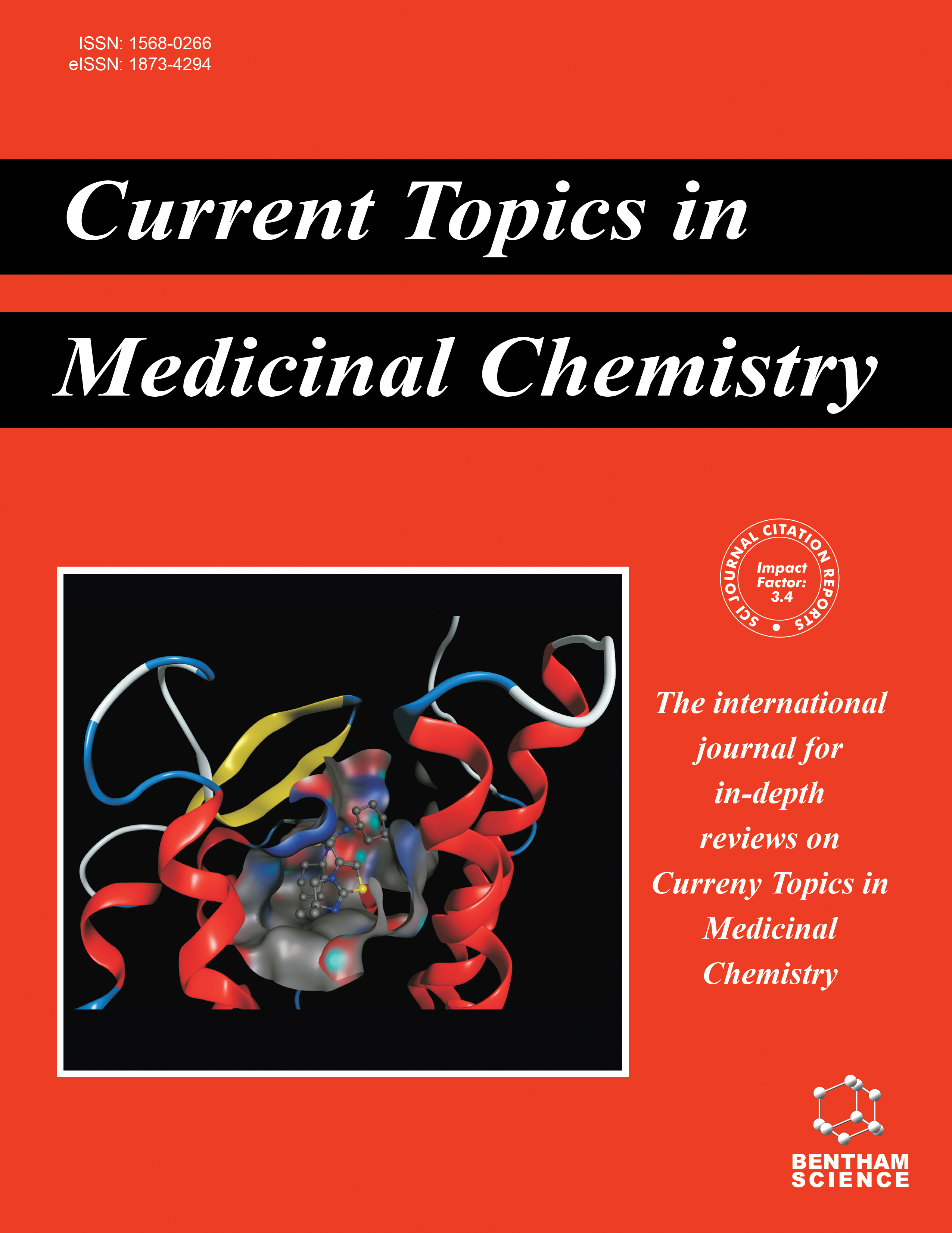- Home
- A-Z Publications
- Current Topics in Medicinal Chemistry
- Previous Issues
- Volume 2, Issue 3, 2002
Current Topics in Medicinal Chemistry - Volume 2, Issue 3, 2002
Volume 2, Issue 3, 2002
-
-
New Paradigms in Drug Design and Discovery
More LessAuthors: N. Neamati and J.J. BarchiJr.The new millennium has ushered in an era of science that will revolutionize a great majority of our daily activities. That revolution is being experienced by a growing number of the population who are pushing the average life expectancy closer to the 80-year mark. The primary reason for this increase is the changes we have made in the last 2-3 decades both in how we live our lives as well as how we treat our maladies Read More
-
-
-
Application of High-Throughput, Molecular-Targeted Screening to Anticancer Drug Discovery
More LessAuthors: R.H. Shoemaker, D.A. Scudiero, G. Melillo, M.J. Currens, A.P. Monks, A.A. Rabow, D.G. Covell and E.A. SausvilleIncreasing insight into the genetics and molecular biology of cancer has resulted in the identification of an increasing number of potential molecular targets for anti-cancer drug discovery and development. These targets can be approached through exploitation of emerging structural biology,”rational“ drug design, screening of chemical libraries, or a combination of these methods. In this article we discuss the applicati Read More
-
-
-
Impact of Recombinant DNA Technology and Protein Engineering on Structure-Based Drug Design: Case Studies of HIV-1 and HCMV Proteases
More LessBy C-C. KanStructure-based drug design is an organized, multidisciplinary endeavor undertaken by scientists from many different scientific fields. The success of structurebased drug design was only made possible by advances in structure biology that provides the three-dimensional structure of the drug design target with which small molecular chemical ligands interact. Visualization of the conformation and interactions of a small molecul Read More
-
-
-
Photoaffinity Labeling in Drug Discovery and Developments: Chemical Gateway for Entering Proteomic Frontier
More LessAuthors: Y. Hatanaka and Y. SadakaneOne of the major events occurring at biological interfaces is the specific recognition of bioactive ligands by their receptor proteins. The elucidation of interacting partners is an immediate entrance into the discovery of medicinal leads. The method of photoaffinity labeling enables the direct probing of target protein through a covalent bond introduced between a ligand and its specific receptor. Thus, the photoaffinity labeling i Read More
-
-
-
RNA and RNA-Protein Complexes as Targets for Therapeutic Intervention
More LessAuthors: E.S. Dejong, B. Luy and J.P. MarinoToday, the majority of pharmaceuticals developed to treat cancers and viral / bacterial infections target cellular, bacterial or viral proteins known to be associated with a given pathology. Although proteins are the focus of most current drug discovery efforts, exciting new research has recently begun which aims to exploit ribonucleic acid (RNA) and RNP particles as novel targets for pharmaceutical development. These RNA-targ Read More
-
-
-
Inhibitors of Protein Farnesyltransferase as Novel Anticancer Agents
More LessAuthors: J. Ohkanda, D.B. Knowles, M.A. Blaskovich, S.M. Sebti and A.D. HamiltonThis paper describes recent progress in the design, synthesis and biological evaluation of inhibitors for the enzyme protein farnesyltransferase (PFTase). This enzyme plays a critical role in the post-translational modification of a range of different intracellular proteins. In particular, PFTase attaches a farnesyl group to the GTPase Ras whose oncogenically mutated form is found in over 30% of human cancers. As a result PFT Read More
-
-
-
Cyclization Strategies in Peptide Derived Drug Design
More LessAuthors: P. Li and P.P. RollerThe choice of peptides as prototype modulators of biological function, is justified on the grounds that peptides are natural constituents of living systems. They exist as hormones, biochemical inhibitors,antigens, growth factors, transmembrane carriers and, indeed they are comprised of the building blocks of all proteins. As such, the natural and mutated analogs of these functional entities provide a rich variety of pharmacop Read More
-
Volumes & issues
-
Volume 25 (2025)
-
Volume 24 (2024)
-
Volume 23 (2023)
-
Volume 22 (2022)
-
Volume 21 (2021)
-
Volume 20 (2020)
-
Volume 19 (2019)
-
Volume 18 (2018)
-
Volume 17 (2017)
-
Volume 16 (2016)
-
Volume 15 (2015)
-
Volume 14 (2014)
-
Volume 13 (2013)
-
Volume 12 (2012)
-
Volume 11 (2011)
-
Volume 10 (2010)
-
Volume 9 (2009)
-
Volume 8 (2008)
-
Volume 7 (2007)
-
Volume 6 (2006)
-
Volume 5 (2005)
-
Volume 4 (2004)
-
Volume 3 (2003)
-
Volume 2 (2002)
-
Volume 1 (2001)
Most Read This Month
Article
content/journals/ctmc
Journal
10
5
false
en


